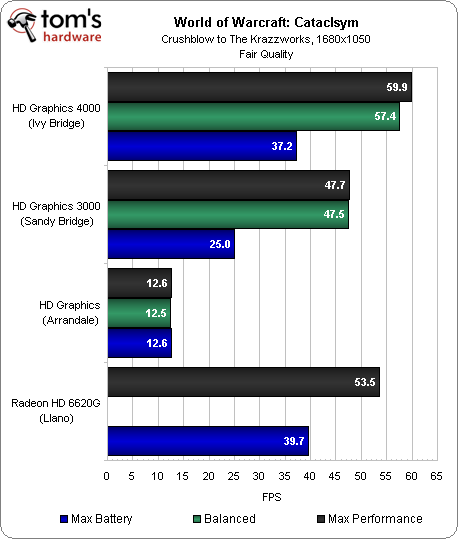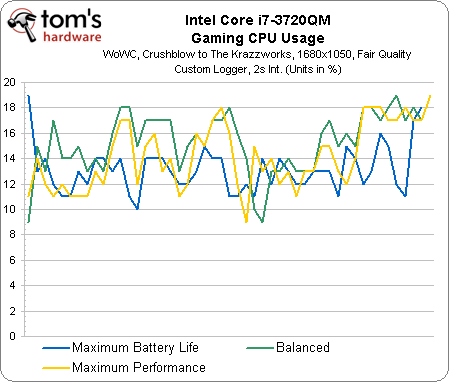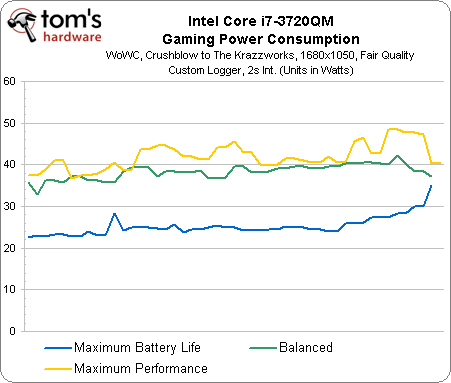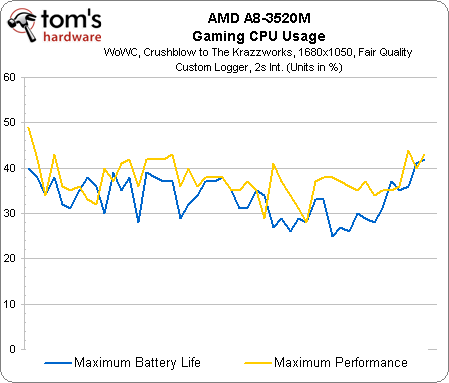Core i7-3720QM: Ivy Bridge Makes Its Mark On Mobility
3D Performance And Power Profiles, Demystified
Notebooks generally employ different power policies, depending on whether the power source is a wall wart or a battery. Many of these settings are not user-accessible, so, we run our benchmarks on battery power in order to maintain consistency.
The graphics subsystem's power profile is controlled independent of the Windows-based power controls. There are three options available on an Intel-based system: Maximum Battery Life, Balanced (the default), and Maximum Performance. AMD's platforms default to “Maximum Battery Life,” and they don't include a “Balanced” middle setting.
All of the benchmark results we just presented to you employ the Intel and AMD defaults. However, when you start testing across profiles, the results start changing in a way that bears examination. The Core i7-3720QM and -2820QM Maximum Battery Life profiles cut performance by almost 50%, but also help the processors consume between 40 and 50% less power. By virtue of advanced 22 nm lithography, HD Graphics 4000 is the more efficient design when you divide power use into frame rate, of course.
In comparison, Arrandale's lack of granular graphics control means you don't see any change in performance or power use when you alter the profiles.
Meanwhile, AMD's Radeon HD 6620G enjoys a 35% speed-up when we switch to Maximum Performance, simultaneously incurring a ~40% increase in power consumption.
Core i7-3720QM
Core i7-2820QM
Get Tom's Hardware's best news and in-depth reviews, straight to your inbox.
Core i5-460M
A8-3520M
Current page: 3D Performance And Power Profiles, Demystified
Prev Page World Of Warcraft: CPU Utilization And Power Consumption Next Page Quick Sync: Performance And Power Consumption







